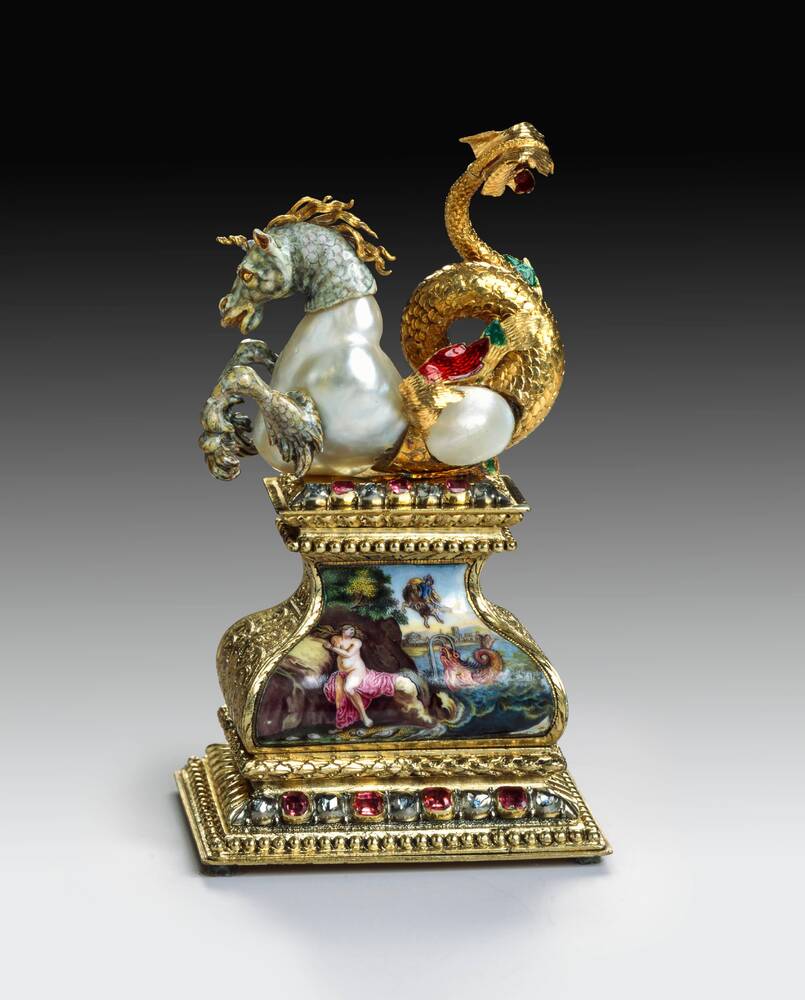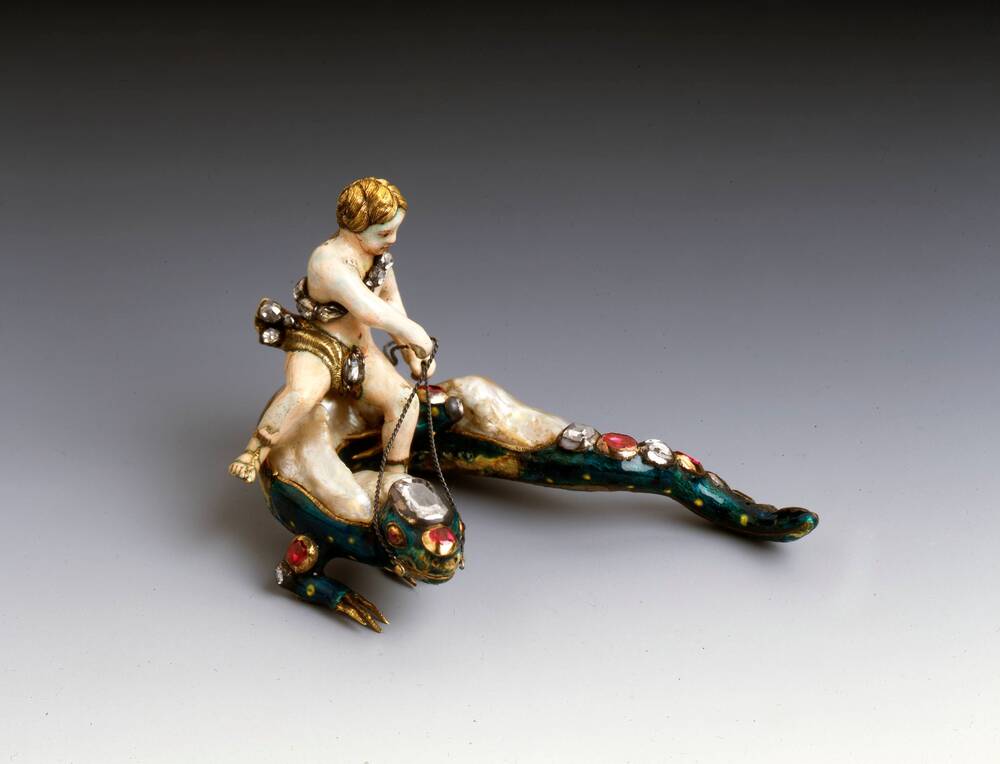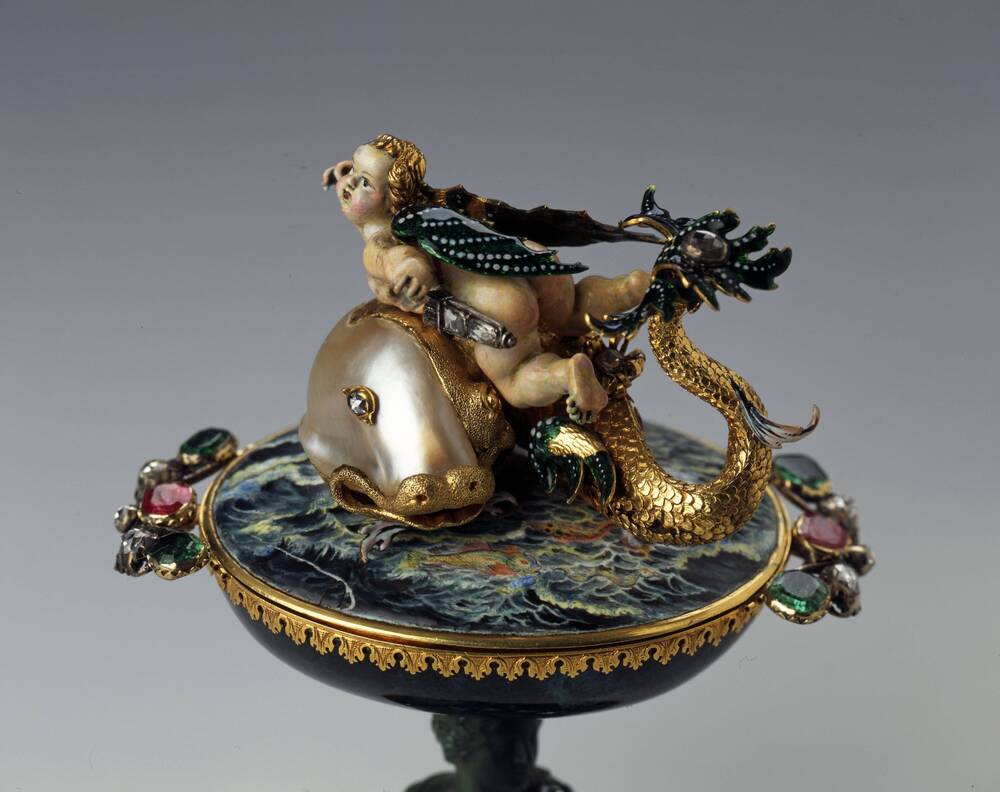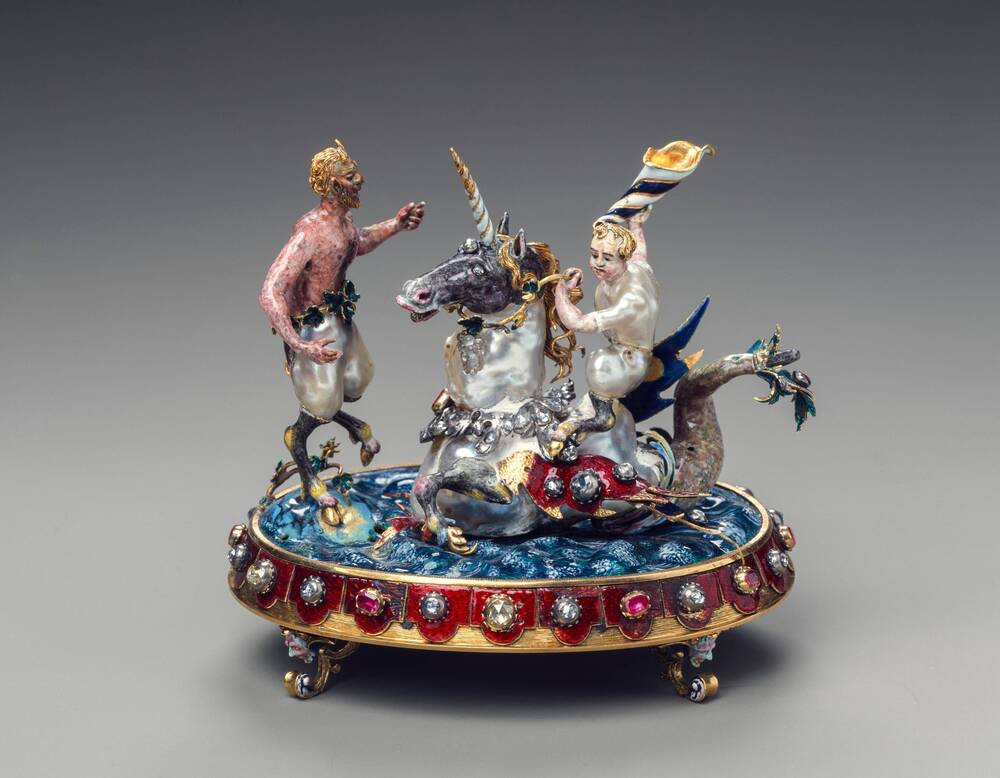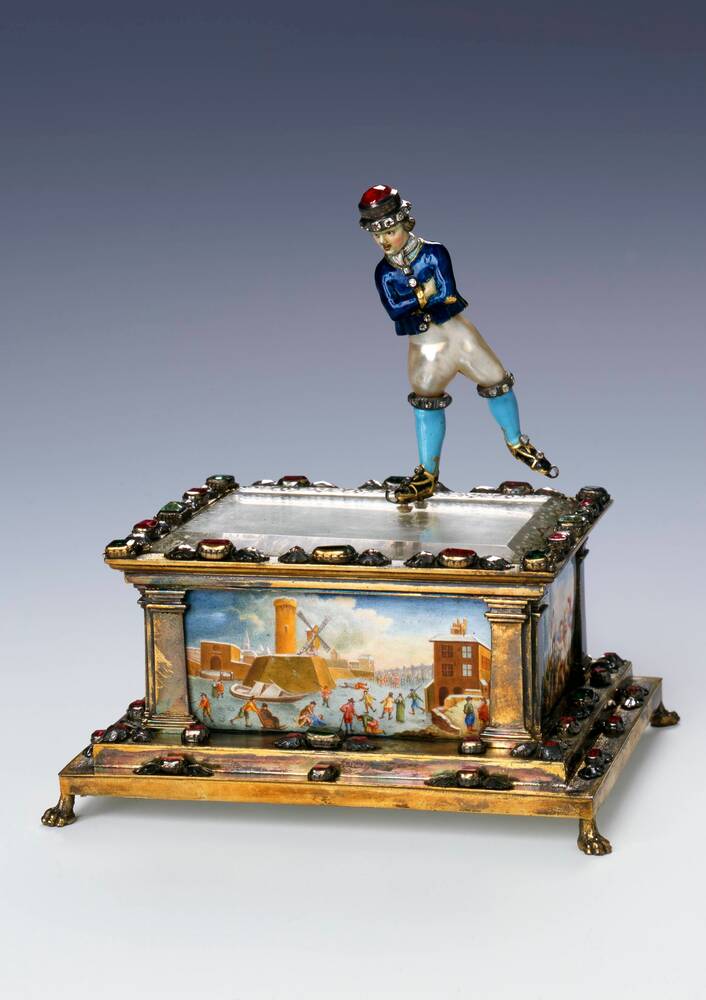Towards the back of this glass-case, on the left, you see a little man with short legs, a stocky figure and a head too big for his body. He’s not exactly handsome, but his exuberance is utterly charming! Look at the enthusiasm with which he fiddles on the gridiron! His bow is a roasting spit. There’s a goose hanging from his hunched back. The carving knife and water-bottle on his diamond-studded belt complete the image. He’s a cook – dancing as though he himself were a member of the royal court. Unconsciously, he caricatures himself.
At the front of the glass-case, on the right, the reveller sitting on a barrel is just as merry! The two bunches of grapes in his right hand are fashioned out of an amethyst and a carnelian. He is brandishing the knife of a grape-picker in the other hand. A charming detail is the cat balancing on the barrel and pawing at this wine-grower’s back.
The bodies of these figurines are irregularly shaped pearls, known as “Baroque” or “blister” pearls. They’ve been elaborately decorated with gold, enamel and precious stones. August the Strong absolutely loved them and had a large collection. It seems that they were an indispensable part of the princely display of power and wealth in the eighteenth century. No less than fifty-seven of these pearl figurines survive in Dresden. It’s the largest collection of its kind in the world!
The smallest pearl used to form the body of a figurine is just three millimetres in diameter. The largest is about five square centimetres. They cover a broad range of characters: from cook and wine-grower, to dancing dwarfs, Harlequins, skaters, beggars, ornament traders, sea monsters and soldiers. Some of the figures were even inspired by the Christian faith and classical mythology.
Eighteenth century pearl figurines were not all humorous or grotesque. Take a look at the soldier in one of the other glass cases in this room. From 1700 to 1721, the European powers were caught up in a conflict known as the Great Northern War. It arose chiefly from the desire of the Sweden’s neighbours to break that country’s supremacy in the Baltic region. Some pearl figurines reflect the realties of that war: not just flag-waving heroes but maimed soldiers too, reduced to begging.
Many of the figurines seem to have been inspired by the work of the French engraver, Jacques Callot. While in Italy, Callot produced a collection of drawings, showing various misshapen dwarfs. The cook you see here has a strong resemblance to Callot’s work. However, he’s much merrier than Callot’s tragic original.
